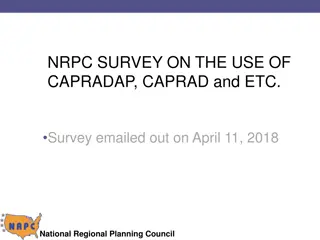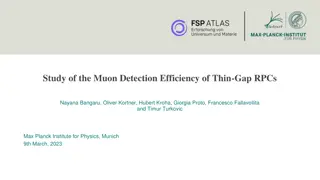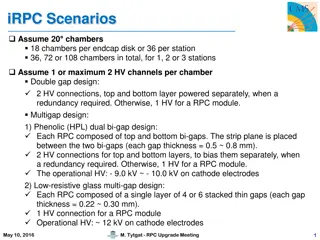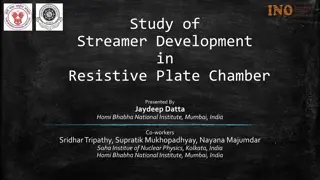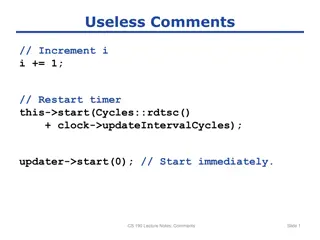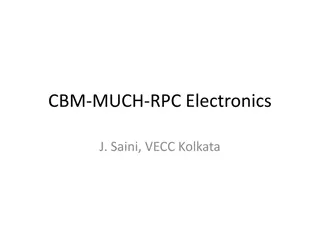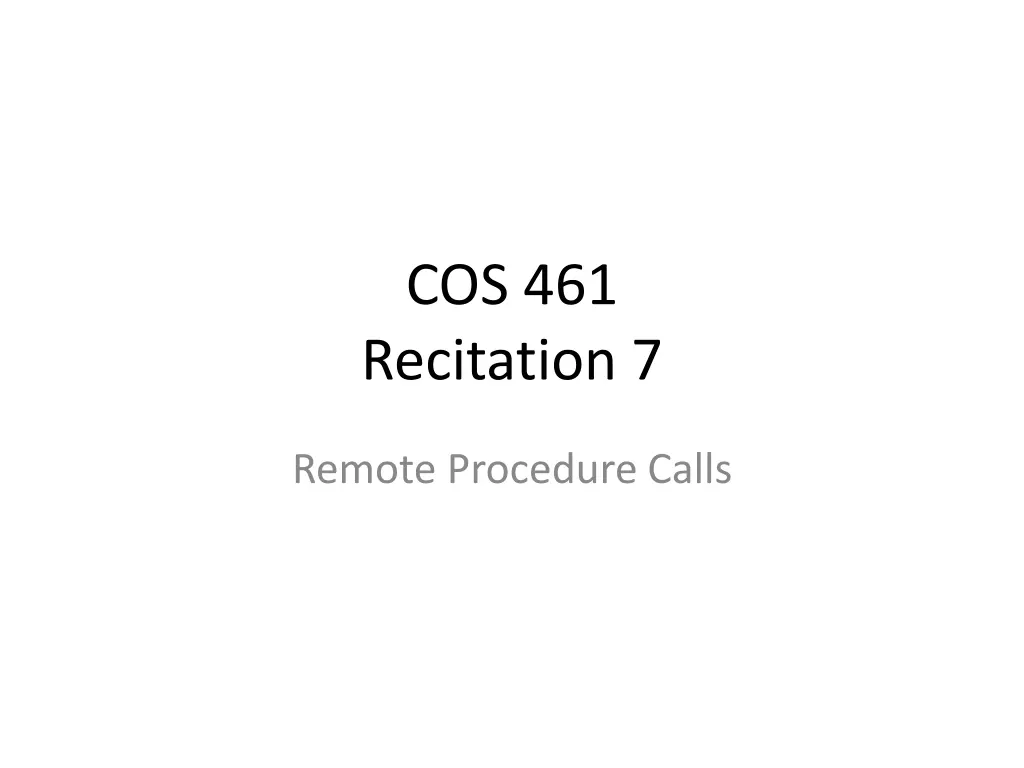
Understanding Remote Procedure Calls in Networked Applications
Explore the concept of Remote Procedure Calls (RPCs) in networked applications, their elements, challenges, and solutions. Learn about common RPC protocols, message formats like XML and JSON, and the importance of handling network failures effectively.
Download Presentation

Please find below an Image/Link to download the presentation.
The content on the website is provided AS IS for your information and personal use only. It may not be sold, licensed, or shared on other websites without obtaining consent from the author. If you encounter any issues during the download, it is possible that the publisher has removed the file from their server.
You are allowed to download the files provided on this website for personal or commercial use, subject to the condition that they are used lawfully. All files are the property of their respective owners.
The content on the website is provided AS IS for your information and personal use only. It may not be sold, licensed, or shared on other websites without obtaining consent from the author.
E N D
Presentation Transcript
COS 461 Recitation 7 Remote Procedure Calls
Common Networked Application Pattern Buy X OKAY APP1 sends message to APP2, expecting Reply Message has a static part and a dynamic part Similar to a function call! Static = function name Dynamic = function args
Remote Procedure Calls (RPCs) Not a particular protocol , rather a class of application protocols Common Elements: Procedure names known a priori Arguments are fixed length, usually typed Often: Arguments supplied as plain code objects Protocols need to define: Message Format How to translate from code to message format
Remote Procedure Calls (RPCs) Are RPCs just like normal procedure calls? No! Calls traverse network: many possible problems / exceptions Can t libraries abstract away the networking? NO!!
Trying to Abstract the Network Trying to mask failures is a Bad Thing TM Example: network timeout Do you retransmit automatically? Potential Solutions?
Using Nonces Nonce : unique-ish number Receiver can tell if a message is repeated What about responses to the client? Can we guarantee the following? If a RPC is processed by the server, the client will receive a successful response.
Lets Look at Real RPC Protocols Message Formats: XML and JSON Protocols / Libraries Java RMI Google Protobufs
Common Message Formats XML and JSON most common general formats These are string formats (typically UTF-8 or even ASCII) XML is horrible <Message type= terribleRPCformat version= 1 > <procedure name= foo > <argument number= 1 value= bar > </procedure> </Message> Compare to just saying foo(bar) Message is longer, harder to parse, etc.
JSON is a bit better JSON has lists, values and dictionaries Looks like: { type : sillyRPCFormat , procedure : Foo , arguments : [ bar ] } Still kind of a silly format That s what you get for string-based object formats, though.
Java RMI Biggest Issue for Java Library: Allowing objects to be used in procedure calls Java Serializable POJOs in, Bytes out MAGIC?!
Java Serialization is not, as it turns out, Magic. Marking class Serializable indicates that it is okay to serialize Library inspects the object: For every field, attempt to serialize() Primitives, such as int and char, have hardcoded serialization functions Write an identifier for the Object s type. Includes Object s fully-qualified name, and a version
Default Java Serialization is Expensive The algorithm is not theoretically expensive However, crawling object reference graphs is expensive in practice. This requires lots of indirect memory fetches, which are not necessarily known by the library E.g., Object A may have an Object[] array. This array can store arbitrary types! How much space would you need to allocate? What kind of Objects do you expect to need to serialize?
Google Protobufs Programmers define the contents of the message Specify exactly what the output of the serialization will be Allows for arrays but these arrays must be of single types Programmers must also define exactly how objects are translated There are automatic tools to help with this With the definition, the library optimizes the output, packs it into a condensed binary format

